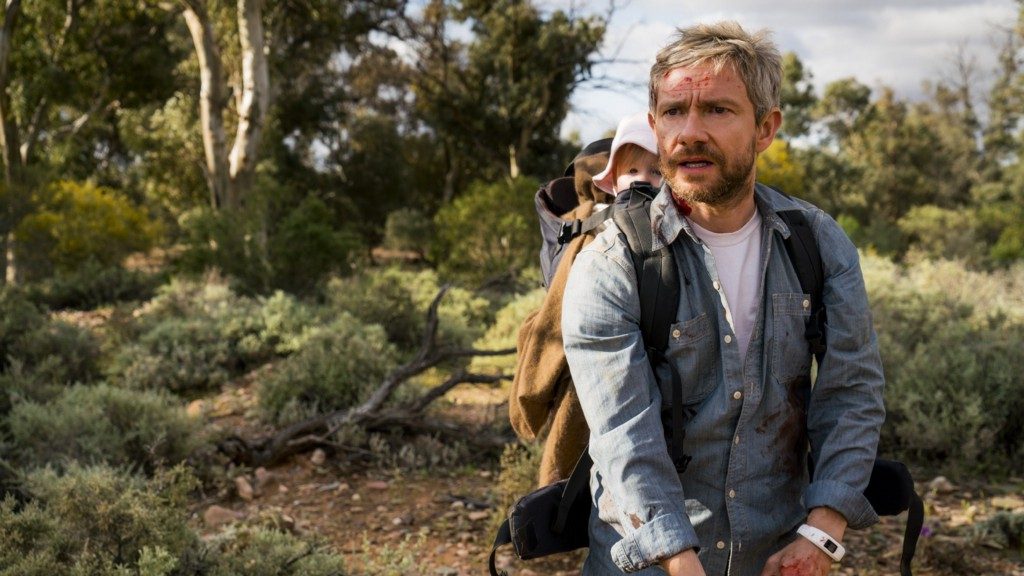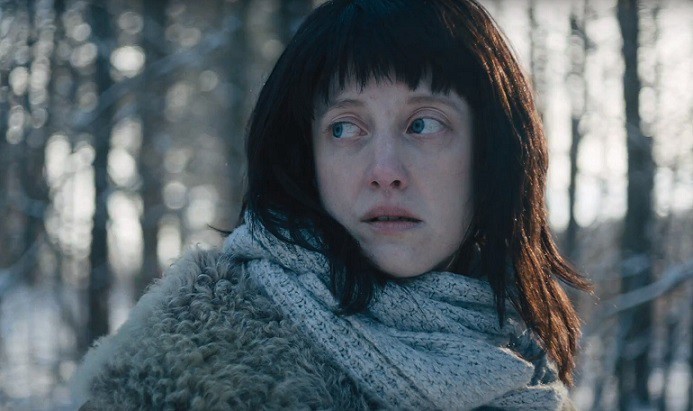Yolanda Ramke is an award-winning screenwriter and director. In 2013, she wrote the short film “Cargo” and co-directed with Ben Howling. It garnered almost 14 million views on YouTube. She received a Australian Writer’s Guild (AWGIE) nomination for the short film “Cold Hearts,” which she co-wrote and co-directed with Danielle Baynes.
“Cargo” premiered at the 2018 Tribeca Film Festival on April 19. The film is co-directed by Howling.
W&H: Describe the film for us in your own words.
YR: “Cargo” is an intimate human drama disguised as a zombie film. It follows two parallel stories: a desperate father seeking a new guardian for his baby before he succumbs to a deadly virus, and a young Aboriginal girl on a mission to save her own family patriarch. As their paths inevitably collide, both must decide what they are willing to sacrifice and how much they are willing to trust each other in order to survive.
W&H: What drew you to this story?
YR: I love it when genre films keep their supernatural strand on the periphery of the narrative, where it’s woven in to evoke context and stakes, but it’s a case of less is more, and it’s the beating human heart of the story that commands the spotlight. My co-director, Ben, and I wanted to experiment with our own take on that with “Cargo.”
It was an opportunity for us to make a zombie film that for the most part eschews gore and scares in favor of emotion and interpersonal conflict. The core of our film is the deeply universal concept of parental love, and how that bond can transcend even death, or in this case, un-death.
The other hook for us was the potential for subtle social commentary. One of our film’s key relationships is between an English man and an Indigenous child, and inherent within that is a both a generational gap and a cultural divide in terms of how they each rationalize the loss of the world they once knew.
Their navigation of this fraught dynamic as they attempt to relate to and ultimately rely upon one another — to embrace an “Other” — is something our nation as a whole has yet to truly achieve, dating back to a very dark and complex colonial history. Thematically speaking, that fascinated us.
As non-Indigenous filmmakers, it was then a case of approaching that element with the appropriate cultural consultation to ensure that it was handled authentically and respectfully.
W&H: What do you want people to think about when they are leaving the theater?
YR: When audiences leave the theater after seeing our film, I really only hope for two things: first and foremost, that they have been emotionally moved by the story, and secondly, that we were able to offer an angle on a popular genre that felt novel in some way.
Although we go out on a bittersweet note, ultimately our intention is for people to walk out feeling hopeful — about what we are capable of as human beings when we lead with compassion instead of withdrawing from one another. Given these bizarre times, that’s probably not a bad vibe to be putting out into the collective consciousness.
W&H: What was the biggest challenge in making the film?
YR: As first-time feature filmmakers, we certainly didn’t make it easy for ourselves in terms of the ambition of this script and the logistics required to pull it off. We had multiple — and isolated — locations.
About 85 percent of our scenes were exteriors, so there was very little wet weather cover to hide behind. That became a huge obstacle when the region we were filming in ended up having their wettest winter in 75 years. We had days where the roads to our sets flooded, which meant losing already scarce shooting time.
We had a baby — played by four babies — and an 11-year-old girl who had never acted in virtually every scene. We spent a week shooting on the water in boats. We had night shoots, car rigs, stunts, special FX, prosthetics, extras, VFX.
The combination of all of those elements, as well as a fairly uncooperative Mother Nature, ensured that literally every single day was a challenge unto itself, but the evening we found ourselves trapped inside an abandoned train tunnel trying to shoot a stunt in the middle of a hurricane probably takes the cake.
W&H: How did you get your film funded? Share some insights into how you got the film made.
YR: “Cargo” is an independent Australian feature. It’s based on a 2013 short film, also co-directed by Ben and myself, which went viral on YouTube. We were essentially able to leverage that as a proof-of-concept for the feature version, which allowed us to initially attach U.S. producers.
Then for the following three years we worked with our Australian producers at Causeway Films, Kristina Ceyton and Samantha Jennings, who shepherded the project through development and financing.
Once we were able to attach Martin Freeman as our lead, the final pieces of the puzzle slotted into place. It was a combination of government funding from our screen agencies, pre-sales from local and foreign distributors, private investment, and reinvesting a significant portion of our own as well as the producers’ fees into the film.
W&H: What does it mean for you to have your film play at Tribeca Film Festival?
YR: “Cargo” is our first feature film, and Tribeca marks our international festival debut. We couldn’t be more excited to be playing here. NYC is one of my favorite cities in the world; it’s just such a vibrant, creative, diverse, and inspiring place, so to be sharing our film with New York audiences is going to be a huge thrill for us.
Tribeca is synonymous with some really impressive films and filmmakers, and the ethos of the festival is really admirable, so we’re genuinely ecstatic to be a part of this year’s lineup.
W&H: What’s the best and worst advice you’ve received?
YR: I think the best and worst advice I’ve received would be, “Never work with children.” It’s a sound tip for obvious reasons — it can take longer to coax out a performance, you’ve only got them for a limited number of hours, they tire more easily, and they get bored and aren’t afraid to tell you.
But the upshot is that when they’re on, they are there — they are present, and honest, and occasionally astonishing. Some of my favorite moments in our film involve Martin, an 11-year-old-first-timer, and a 12-month-old baby, because there’s a spontaneity and an authenticity in those scenes that those kids naturally bring that hits you right in the feels.
W&H: What advice do you have for other female directors?
YR: The advice I would offer other female directors is the same advice I am trying to learn to practice myself, which is just to essentially own your right to be there. I work with a male co-director who has always treated me as an equal, but even so, there are still times where I find myself prefacing my opinions with the word “sorry,” as though my very right to a point of view — and the idea of a room full of people having to hear to it — is something I am obligated to be deferential about.
I think another big thing is not to tie yourself in knots trying to be a people pleaser, which most women have been conditioned to be since childhood. You will never be able to please everybody and it’s insane how much creative energy you can waste obsessing over whether you’re being nice enough, or easygoing enough, or not-a-bitch enough. That’s not an excuse to be difficult for the sake of it, or to be dictatorial. But you can be firm and you can be direct — after all, men do it all the damn time.
W&H: Name your favorite woman-directed film and why.
YR: “After The Wedding” by Susanne Bier. The performances are world-class. The tone is just so distinctive — it’s that Danish shade of bleak and yet somehow hopeful and life-affirming at the same time. Utterly gripping. Devastatingly emotional. Fiercely human. It deals with death in such a raw, honest way and with such a bold structure. It’s everything.
W&H: Hollywood and the global film industry are in the midst of undergoing a major transformation. Many women — and some men — in the industry are speaking publicly about their experiences being assaulted and harassed. What are your thoughts on the #TimesUp movement and the push for equality in the film business?
YR: The #TimesUp movement has been incredibly heartening. I don’t know a single woman who hasn’t been affected by an experience like this — it’s beyond time this conversation took place on a global stage.
In terms of equality in the film business, a recent Australian study commissioned by our primary screen agency determined that from 1970–2014, only 16 percent of feature film directors, 21 percent of feature film writers, and 30 percent of feature film producers were women. The statistics were far worse for LGBTQI filmmakers, female filmmakers of color, and female filmmakers with a disability. When you consider that the gender ratio of graduates coming out of our film schools is roughly 50/50, those figures are objectively unacceptable.
What also needs to shift — and it is happening, slowly — is this preconceived idea about the kinds of films that a woman can make, or aspires to make — this notion that genre filmmaking is an exclusively male domain.
Historically, women have been viewed through a very narrow prism in terms of what projects might appeal to us — both as filmmakers, and as audience members — and it’s a narrative that doesn’t sync up at all with what often excites me as a storyteller or viewer, nor of any of the female filmmakers I know. I’d love to see that blown out of the water — as well as hopefully one day the term female filmmaker itself, which I think we’d all like to see become redundant.
But the conversation is growing louder, and it’s translating into real action on both sides of the equation, and that does make me feel optimistic about where we’re headed.







